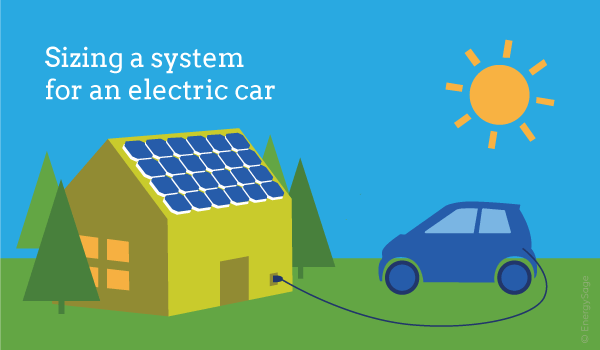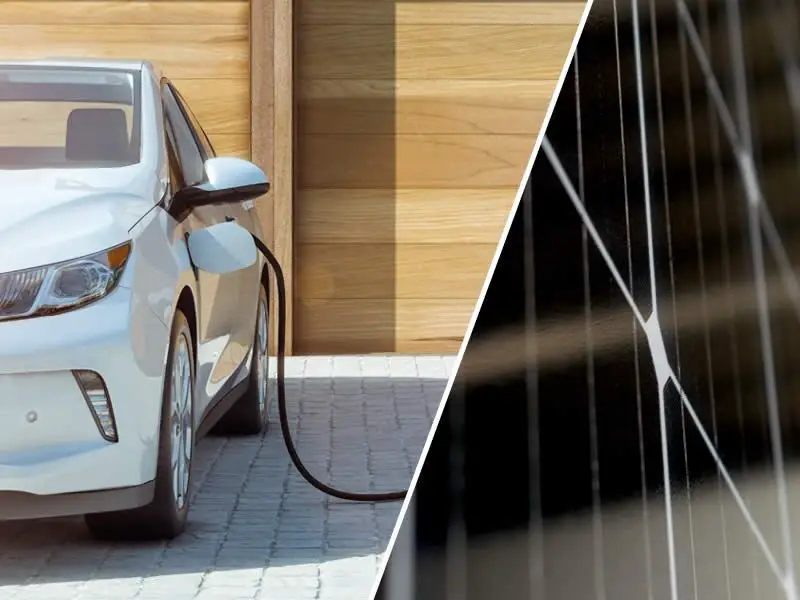Solar panels an alternative for charging electric cars.
Choosing an electric car is a smart thing to do. Even in the most expensive electricity markets, charging an EV is cheaper than buying gas for an internal combustion engine (ICE) car.


Choosing an electric car is a smart thing to do. Even in the most expensive electricity markets, charging an EV is cheaper than buying gas for an internal combustion engine (ICE) car. Electric cars also have about 25% lower maintenance costs compared to ICE vehicles. Finally, EVs don’t pollute the environment by burning fossil fuels.
When you own an electric vehicle any standard 120-volt outlet can be the source of a few more miles. This may work in a pinch, and if you have time to burn, but it’s just not efficient. A 120-volt outlet will only add about 4 miles per hour and take a full 8-16 hours to fully charge.
It’s best to upgrade to a Level 2 EV charger for home use. This type of charger is the most common, and adds 20-30 miles per hour and takes 6-8 hours to recharge a fully electric vehicle or about one hour to fully charge a plug-in hybrid electric vehicle (PHEV).
Apart from solar panels being cheaper to recharge electric vehicles there are various advantages of using solar. In Uthe SA for example, the long-term cost of solar panels is less than buying electricity from the grid. In some cases, the cost of producing your own solar energy is more than 50% less than buying grid power.
You can install enough solar panels to meet your home’s energy needs, charge your car, and save thousands of dollars over time. Plus, solar panels come with warranties to produce electricity for at least 25 years, so you’ll be saving long into the future.
Another huge benefit of solar is the amount of waste it reduces. Switching to an EV already means you’re cutting emissions by eliminating the need for gasoline and oil, but electricity from the grid still comes mostly from natural gas and coal.
Just a handful of solar panels on your roof is enough to provide energy to charge your first EV, and your second, your third, and so on. Again, those panels will last at least 25 years. No wonder they call it renewable energy.
How to charge an EV with solar
Here are the steps to use solar panels to charge your electric car:
- Step 1: Determine how many kWh you need for your car for your driving habits
- Step 2: Figure out how many solar panels you need to make the kWh
- Step 3: Purchase solar equipment that can make that much electricity
- Step 4: Get a Level 2 car charger
Here are some of the advantages of charging your EV using solar panels:
- The levelised cost of solar energy is cheaper than grid power in most cases
- The cost of grid power goes up over time, while solar panels keep producing electricity without additional cost
- Solar panels are far less polluting than electricity from the grid:
- 450 gallons of gas results in 8,820 lbs of CO2 emissions
- 3,780 kWh of California grid power makes 1,531 lbs of CO2 (0.41 lbs/kWh + 35 lbs CO2 from EV lithium battery production)
- 3,780 kWh of home solar energy makes 368 lbs of CO2 (0.088 lbs/kWh + 35 lbs CO2 from EV battery)
Source:
i) Solar reviews (2022) How and why to use solar panels to charge an electric car
ii) Tara McDermott (2022) How to Use Your Solar Panels to Charge Your Electric Vehicle




